14 State Parks That Are Just As Stunning As Yellowstone And Yosemite
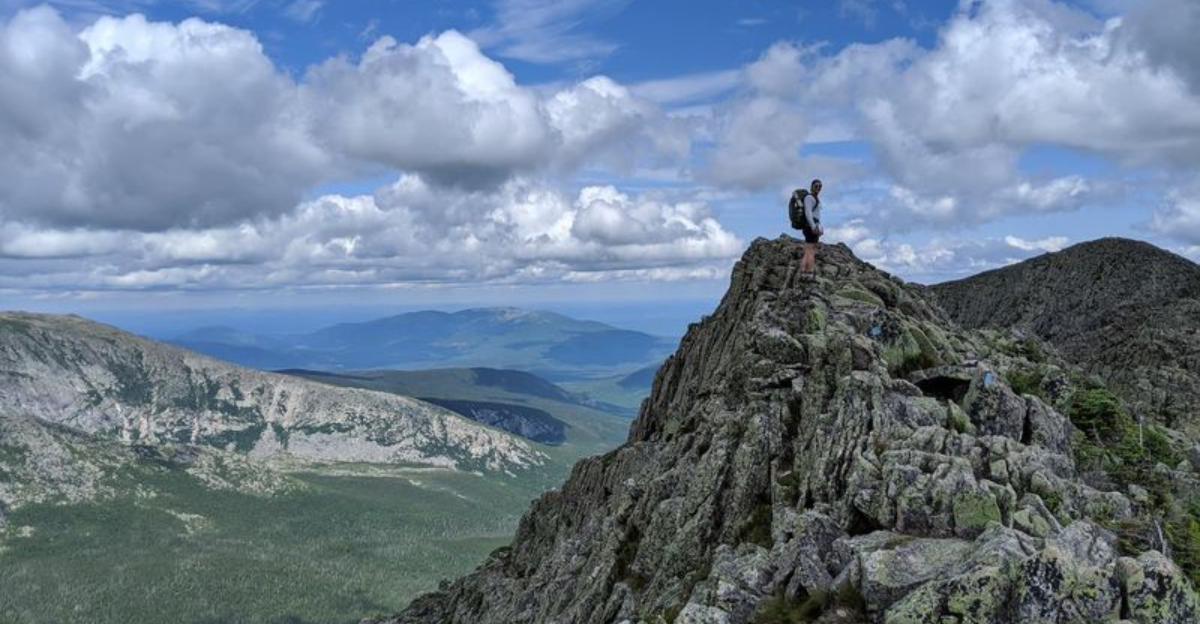
Think only national parks have all the jaw-dropping views? Think again. Across the U.S., state parks are quietly stealing the show offering epic hikes, stunning waterfalls, serene lakes, and wild scenery without the long lines or packed trails.
These underrated gems deliver the kind of outdoor magic you’d expect from the big names, minus the chaos. Ready to explore nature’s best-kept secrets?
Here are the state parks that might just become your new favorite escapes.
1. Palo Duro Canyon State Park, Texas
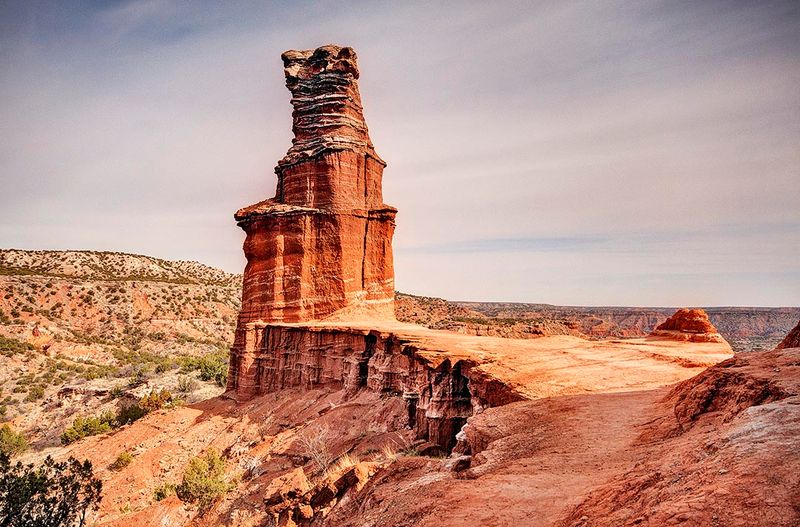
Did you know America’s second-largest canyon isn’t in Arizona? Palo Duro Canyon stretches 120 miles across the Texas Panhandle, carving a spectacular 800-foot-deep gorge through colorful rock layers.
When you stand at the rim, you’ll see bands of red, orange, and yellow stone that tell millions of years of geological history. The canyon floor offers hiking trails that wind through juniper trees and past ancient rock formations.
Summer evenings bring the outdoor musical “TEXAS,” performed in a natural amphitheater carved into the canyon walls. You can camp under star-filled skies or explore over 30 miles of trails by foot, bike, or horseback.
2. Hocking Hills State Park, Ohio

Hidden waterfalls tumble through sandstone gorges in this Ohio treasure that feels like an enchanted forest. Old Man’s Cave, the park’s most famous feature, showcases a recess cave formed by years of water erosion.
You’ll discover six major areas connected by hiking trails, each offering unique rock formations and cascading water. Ash Cave creates a natural amphitheater where a 90-foot waterfall drops from the rim above.
Rock House stands as Ohio’s only true cave, featuring a corridor carved through solid rock. Spring brings wildflowers carpeting the forest floor, while autumn transforms the canopy into brilliant reds and golds that reflect in quiet pools below.
3. Valley of Fire State Park, Nevada
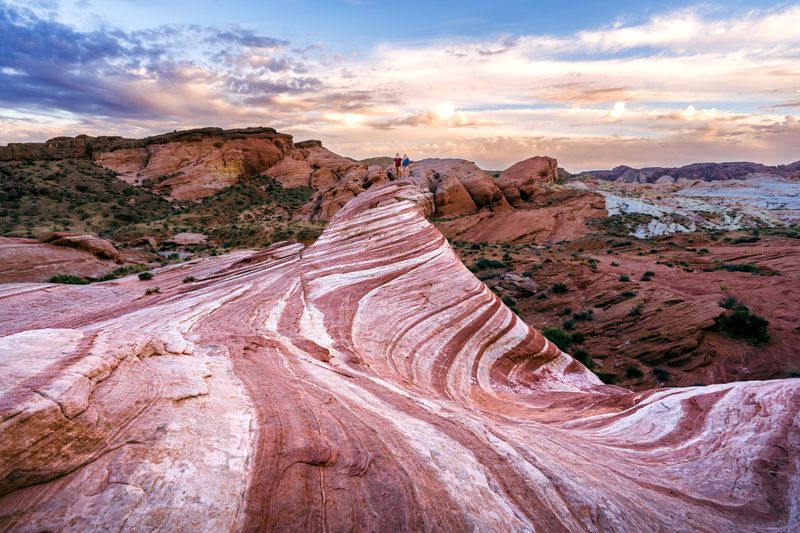
Fire-red rocks seem to glow from within at Nevada’s oldest state park, where 40,000 acres of Aztec sandstone create an otherworldly landscape. The name comes from red sandstone formations that appear to be on fire when reflecting sunlight.
Ancient petroglyphs cover rock walls throughout the park, left by Native Americans over 2,000 years ago. You can explore these historical treasures along easy walking trails that lead to Mouse’s Tank and Atlatl Rock.
The Fire Wave trail takes you to stunning red and white striped rock formations that look like frozen ocean waves. Elephant Rock and Beehives offer incredible photo opportunities, especially during golden hour when the entire valley seems to burn with natural light.
4. Goblin Valley State Park, Utah

Thousands of mushroom-shaped rock formations called “goblins” populate this surreal Utah landscape that looks like an alien planet. Wind and water carved these sandstone sculptures over millions of years, creating a natural playground unlike anywhere else.
You’re free to climb, explore, and wander among the hoodoos without marked trails restricting your adventure. Kids love scrambling through narrow slots and discovering hidden passages between the towering rock formations.
The park’s three valleys contain different types of formations, from tall, thin spires to squat, rounded goblins. Sunrise and sunset paint the red rocks in brilliant colors, while night brings some of the darkest skies perfect for stargazing and astrophotography.
5. Watkins Glen State Park, New York
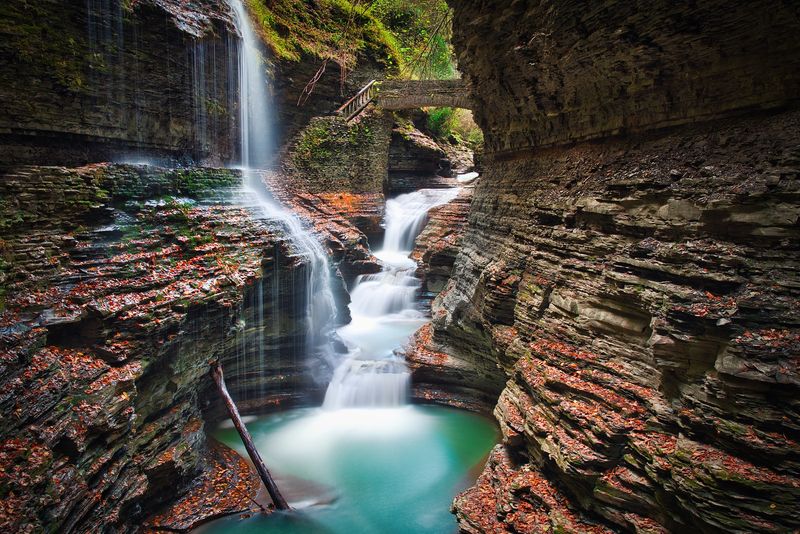
Nineteen waterfalls cascade through a narrow gorge that feels like nature’s cathedral in the heart of New York’s Finger Lakes region. The Gorge Trail follows a stone path carved into the cliff walls, taking you behind and beside rushing waterfalls.
Rainbow Falls creates a natural shower as you walk behind the 60-foot cascade on stone steps. The gorge walls rise 200 feet above the creek, creating cool, misty conditions even on hot summer days.
Glen Creek carved this spectacular canyon through layers of shale and sandstone over thousands of years. You’ll cross stone bridges and climb carved steps that make you feel like you’re exploring an ancient castle rather than a natural wonder.
6. Cathedral Gorge State Park, Nevada
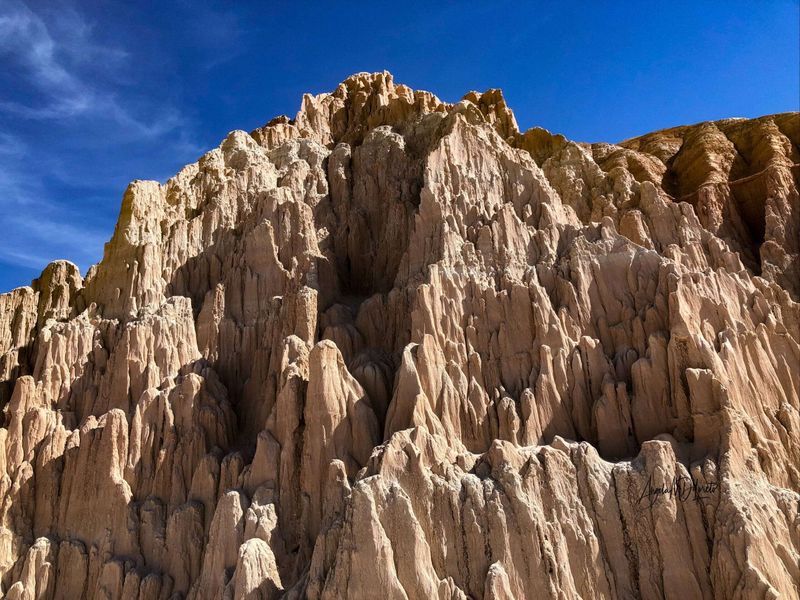
Towering spires and narrow slot canyons carved from soft clay create a landscape that resembles Gothic cathedral architecture. Miller’s Point offers panoramic views of the entire gorge system, where erosion sculpted dramatic formations from ancient lake bed sediments.
You can explore narrow passages between towering walls that reach heights of 150 feet. The soft Bentonite clay formations continue changing shape as wind and rare desert rains slowly reshape the landscape.
Moon Cave provides a natural shelter carved deep into the canyon wall, while the Nature Trail leads through the heart of the gorge system. Early morning and late afternoon light creates stunning shadows and highlights that emphasize the cathedral-like quality of these remarkable formations.
7. Antelope Canyon State Park, Arizona
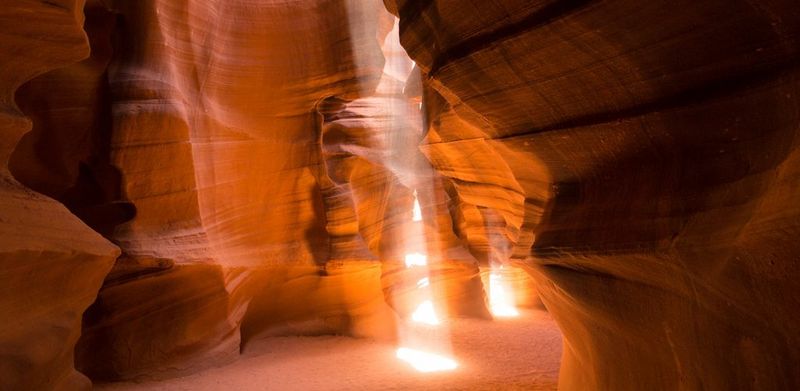
Light beams dance through narrow openings above as you walk through sculpted sandstone corridors that seem painted by divine hands. Flash floods carved these slot canyons through Navajo sandstone, creating smooth, flowing walls that change color throughout the day.
Upper Antelope Canyon offers the famous light beam photography opportunities, while Lower Antelope Canyon provides a more adventurous experience with ladder descents. The canyon walls display incredible colors from deep purple to brilliant orange.
You must visit with guided tours due to flash flood dangers, but the experience feels magical as sunlight filters through the narrow opening above. The Navajo name “Tsé bighánílíní” means “the place where water runs through rocks,” perfectly describing this natural wonder.
8. Letchworth State Park, New York
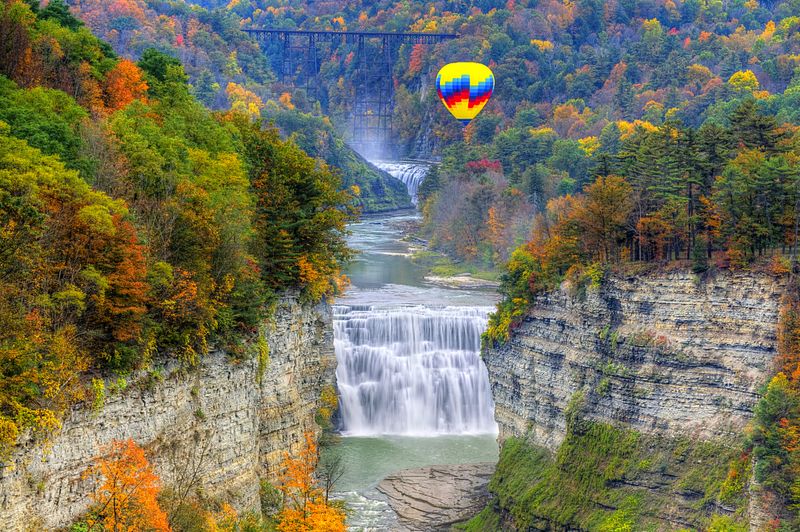
Three magnificent waterfalls thunder through a 17-mile gorge that earned the nickname “Grand Canyon of the East.” The Genesee River carved this spectacular canyon through layers of shale and sandstone, creating 600-foot-deep walls.
Upper, Middle, and Lower Falls each offer unique viewing opportunities from rim trails and bridge overlooks. The 107-foot Middle Falls provides the most dramatic view, especially during spring snowmelt when water volume peaks.
Autumn transforms the canyon into a masterpiece of red, orange, and gold foliage that rivals any New England destination. You can explore over 66 miles of hiking trails, go whitewater rafting, or take a hot air balloon ride for aerial views of this natural wonder.
9. Dead Horse Point State Park, Utah

A narrow neck of land 2,000 feet above the Colorado River creates one of the most photographed vistas in the American Southwest. Legend says cowboys used this natural corral to trap wild horses, giving the park its haunting name.
The Colorado River makes a dramatic gooseneck turn far below, creating a scene that changes color throughout the day. Sunrise and sunset paint the canyon walls in brilliant reds and oranges that reflect in the winding river.
You’ll recognize this view from countless movies and commercials, including the final scene of “Thelma and Louise.” The visitor center offers exhibits about the area’s geology and wildlife, while camping lets you experience incredible night skies away from city lights.
10. Pictured Rocks National Lakeshore, Michigan
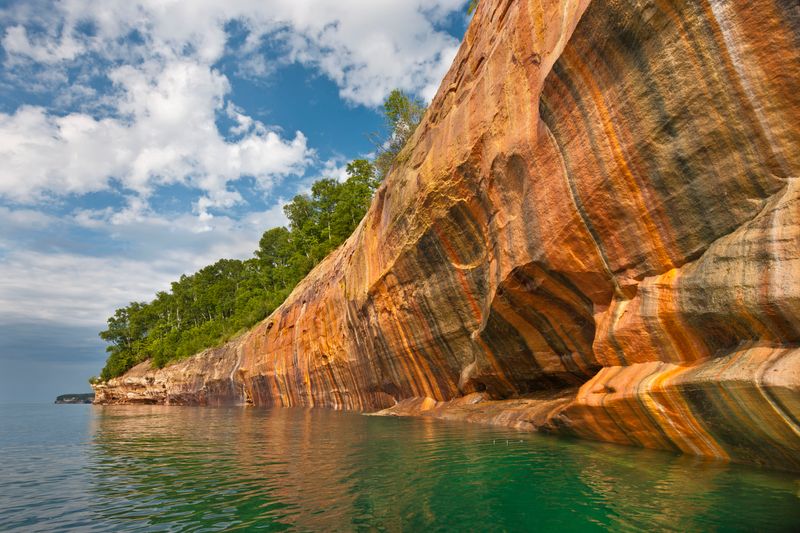
Multicolored sandstone cliffs rise directly from Lake Superior’s crystal-clear waters, creating a 40-mile stretch of natural artistry. Minerals seeping through the rock painted these cliffs in bands of red, orange, yellow, green, and blue.
Chapel Rock balances precariously on a narrow pedestal, connected to the mainland by a single tree root bridge. Miners Castle provides easy access to spectacular cliff-top views, while Spray Falls cascades 70 feet directly into the lake.
Kayaking offers the best way to appreciate the full scale of these painted cliffs and explore sea caves carved by Lake Superior’s waves. The clear water reveals shipwrecks below, adding mystery to this already magical landscape along America’s inland sea.
11. Natural Bridge State Park, Virginia
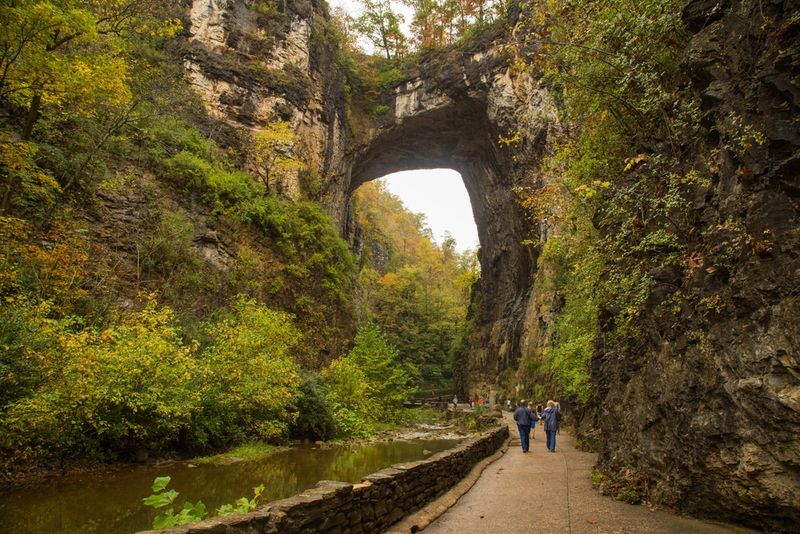
A 215-foot-high limestone arch spans Cedar Creek in a natural wonder that amazed Thomas Jefferson enough to purchase it from King George III. This geological marvel formed when underground water dissolved limestone, leaving behind a natural bridge strong enough to support a highway.
You can walk beneath the massive arch and explore the creek that carved this formation over millions of years. The Monacan Indian Living History Exhibit explains how Native Americans considered this sacred ground.
Evening light shows project onto the bridge during summer months, while the surrounding forest offers hiking trails to Lace Falls and other scenic spots. George Washington supposedly carved his initials into the rock wall, though historians debate the authenticity of this claim.
12. Custer State Park, South Dakota

Free-roaming bison herds thunder across 71,000 acres of prairie and pine-covered hills in one of America’s finest state parks. The annual buffalo roundup each fall draws thousands of visitors to watch cowboys and cowgirls herd over 1,300 bison.
Needles Highway winds through granite spires and natural tunnels carved through solid rock, offering one of the most scenic drives in America. Wildlife viewing includes mountain goats, bighorn sheep, elk, and prairie dogs.
Sylvan Lake reflects granite peaks in its mirror-like surface, while Iron Mountain Road features pigtail bridges and tunnels that frame Mount Rushmore in the distance. You can camp, fish, hike, or simply watch massive bison herds graze in their natural habitat.
13. Kalaloch State Park, Washington

Wild Pacific waves crash against sea stacks and driftwood-strewn beaches along Washington’s Olympic Peninsula, creating one of the most dramatic coastlines in America. Ruby Beach gets its name from garnet sand that sparkles in the sunlight.
Massive pieces of driftwood create natural sculptures along miles of pristine shoreline, while tide pools reveal colorful sea anemones, starfish, and other marine life. The Tree of Life clings impossibly to eroding cliffs above the beach.
Storm watching becomes a winter spectacle when massive waves generated by Pacific storms crash against offshore rocks. You can explore seven different beaches, each offering unique perspectives of this wild coastline where temperate rainforest meets the restless sea.
14. Baxter State Park, Maine

Mount Katahdin rises majestically from Maine’s North Woods, marking the northern terminus of the Appalachian Trail and providing some of the most challenging hiking in the Northeast. This 200,000-acre wilderness preserve remains forever wild by legislative mandate.
Katahdin’s knife-edge ridge offers heart-pounding hiking with spectacular views, while dozens of pristine lakes reflect surrounding peaks. The park maintains a strict wilderness atmosphere with limited facilities and no cell phone service.
You’ll encounter moose, black bears, and loons in their natural habitat, while fall brings brilliant foliage that rivals anywhere in New England. Camping requires reservations months in advance, as this remote wilderness experience draws outdoor enthusiasts from around the world seeking authentic adventure.
